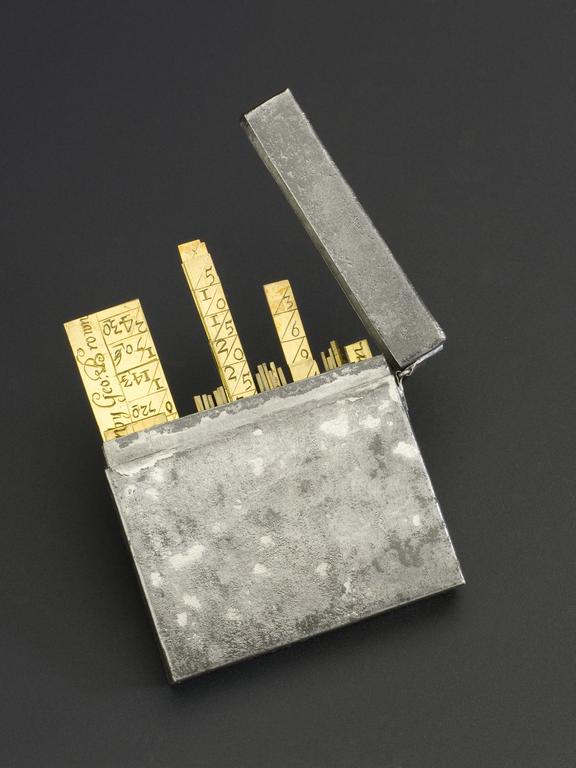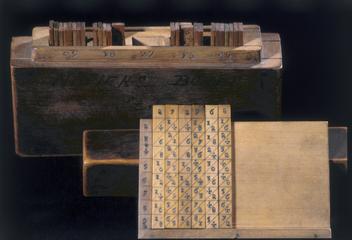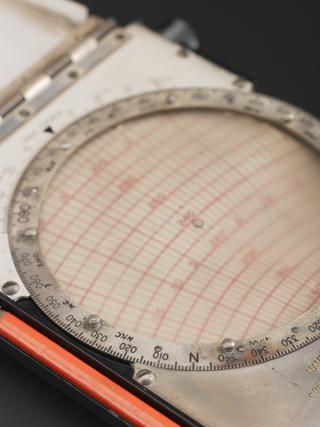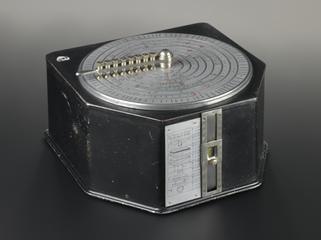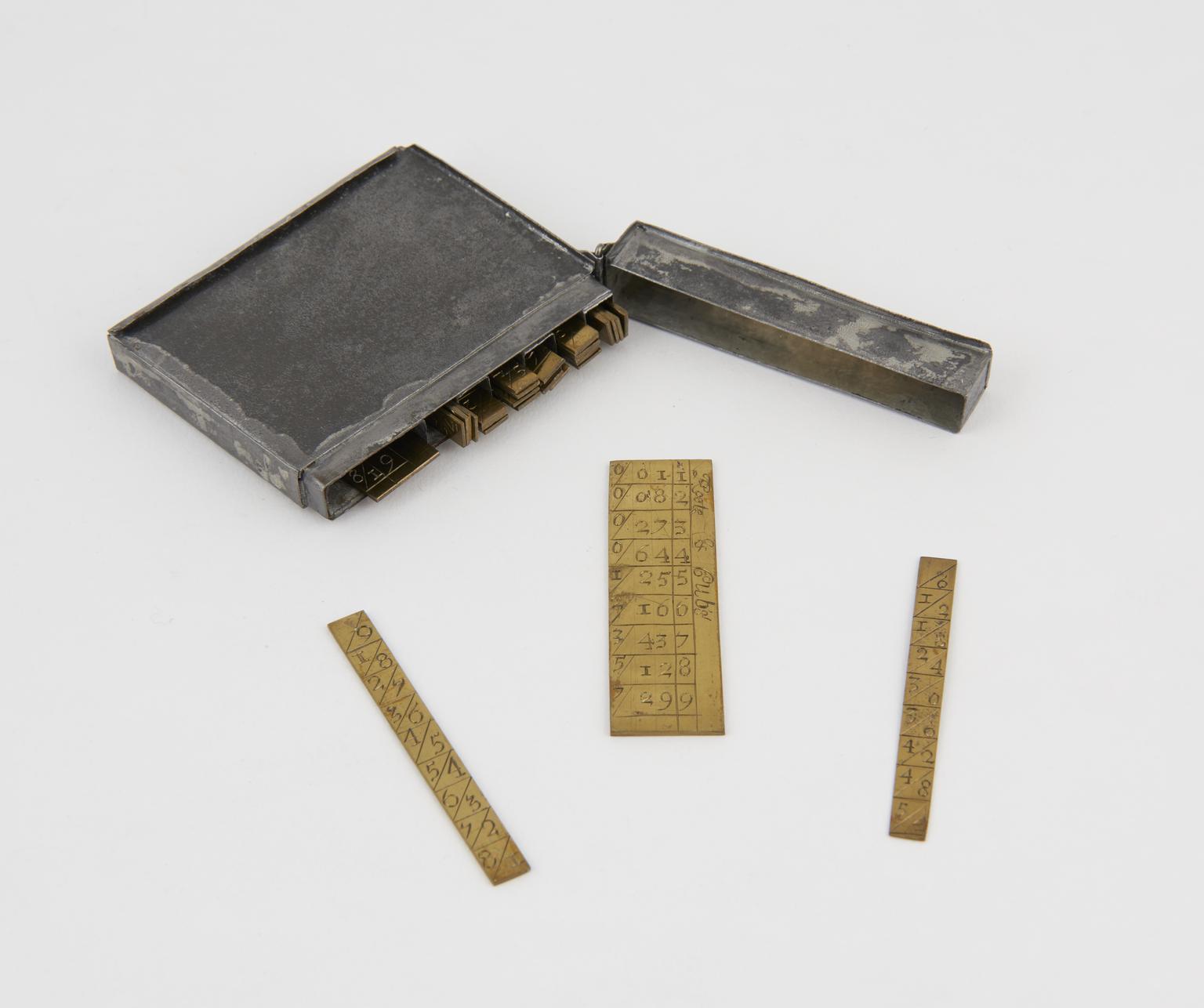
Twenty-nine of thirty Napier's brass rods in tin case
Twenty-nine Napier's brass rods in tin case, (two of the rods signed 'Geo Brown'), by George Brown, Scotland, 1670-1699. From the Library of the Lord Napier and Ettrick (see note).
- Materials:
- brass (copper, zinc alloy) and tin (metal)
- Object Number:
- 1925-800/1
- type:
- mathematical instrument
- Image ©
- The Board of Trustees of the Science Museum
